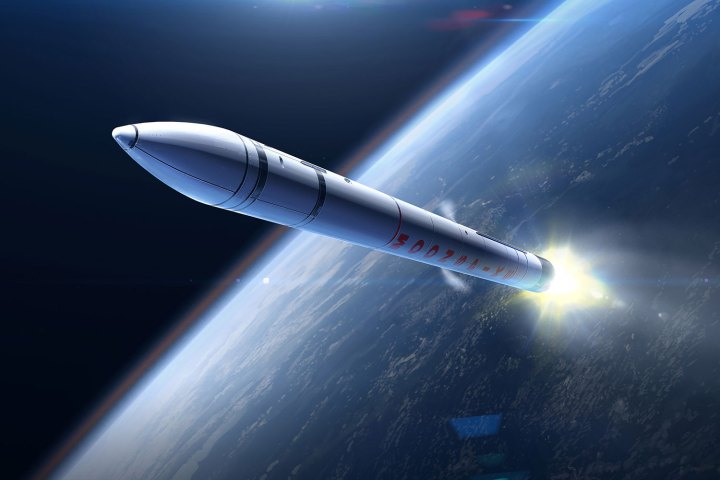
According to the team’s Kickstarter page, the goal “is to build a two-stage, liquid-fueled vehicle that is capable of lifting a small spacecraft into Low Earth Orbit (LEO). We will then send that spacecraft to the Moon carrying our payload,” which could consist of data and information you send to the team (along with your donation). The spacecraft itself will be relatively small, maxing out at a weight of 147 kilograms (around 324 pounds), and will serve mainly as a vessel for “volumes of liquids and gases used to push it toward the moon, with communications and guidance electronic.”
Moonspike itself is actually a small titanium shard “designed to survive a hard landing with the moon.” Contained within the spike will be a data store that, fingers crossed, will be embedded in the surface of the moon. So yes, you’re paying to fund a rocketship that will ultimately stab an extraterrestrial body with loads of information.
But this isn’t really the end goal of the project. “By rethinking the parameters of space travel,” the team says, “We’re trying to make access to space cheap and accessible for the average person.” And better still for you, the backer, the Moonspike folks promise full transparency. “A typical space project will be quite secretive. We’re going to be almost the exact opposite,” they claim on their Kickstarter page. “Whatever happens, good or bad, we’re going to be open about it, through blogs, videos, and interviews. Instead of hiding behind a wall, we’ll let you see exactly where your support is going on a very regular basis.”
Of course, unlike other Kickstarter projects, where payoff seems is often tangible and relatively instantaneous, you’ll have to be ready to commit for the long haul if you involve yourself with Moonspike. Necessary next steps include renting a rocket factory, equipping workshops, buying materials, paying staff, and then actually building the damn thing. But hey, good things come with time.
So if you want to make history by being part of the first ever crowdfunded data trip to the moon, head on over to Kickstarter and make your donation to Moonspike.


